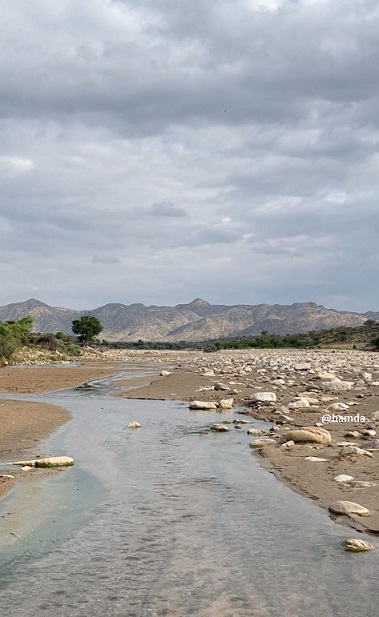
As a young and proud Somali from Awdal, I was thrilled to embark on a seven-month journey with my family to explore the breathtaking landscapes and rich cultural heritage of Awdal, Somalia. Our adventure took us to some of the region’s most fascinating cities, each with its unique charm and character.
Our first stop was the bustling city of Borama, the capital of the Awdal region. I was immediately struck by the city’s vibrant energy and the warm hospitality of the locals. We explored the lively markets, sampled delicious street food, and visited historical sites, such as the Borama Citadel, which dates back to the 14th century. It was fascinating to learn about the city’s rich history and the various empires that once ruled the region from Zeyla.
A tale of Somali resilience
From there, we traveled to the city of Dilla, where we witnessed the devastating aftermath of the 1991 massacre. The ruins of the city were a stark reminder of the devastating impact of conflict on innocent civilians. The ruins of the city were still visible and the distress of the locals was palpable. It was heartbreaking to see the pain and suffering of the local people.
We spoke with many locals who expressed their frustration and disappointment with the lack of support they had received from Somaliland. The lack of funding, support, and aid from the administration has left them struggling to rebuild their lives and their city. It was heartbreaking to see the impact of such violence on innocent people and their communities.
Despite these challenges, we were grateful for the opportunity to connect with the local people and learn about their painful memory and strong commitment to rebuild. One of the highlights of our trip was visiting the city of Boon, where we spent time chatting with locals and drinking delicious Somali tea.
The need for investment
As we continued our journey through Awdal, we were struck by the region’s natural beauty and stunning mountainous landscapes. However, it was also apparent that the region was severely underdeveloped, with a lack of basic infrastructure, such as roads and public services.
It was frustrating to see such a beautiful region neglected by Somaliland despite the fact that Awdal was the second source of its tax revenue. However, we also saw signs of hope, with some community members taking the initiative to clean up their neighborhoods and improve living conditions.
We were pleased to see that some areas, such as Hargeisa, Burco, and Berbera, had proper roads, thanks to funding from mainly UK, Danemark, Netherland, U.A.E and even China. However, it was disheartening to learn that, even in 2023, major road construction projects had only just begun in Borama. It was clear that genuine political will and much more investment is needed to improve the region’s dilapidated infrastructure to unlock Awdal’s full economic potential.
Our journey through Awdal was a powerful reminder of the importance of cultural heritage and the need for investment in underdeveloped regions. We left with a newfound appreciation for the resilience of the Somali people and a deep sense of gratitude for the opportunity to connect with our ancestral lands.
A must-go tourist destination

In addition to Borama and Dilla, we had the chance to visit many other beautiful cities and towns in Awdal, including Ruqi, Gabiley, Baki, Wajalle, Cardille, Dhuxuunka, Caadmadone, Waxar-waalislay, Daraar Waxaar, Jarorhorto, Gabiley, Arabsiyo, Quuljeed, Boon, Xariirad, Cabdiqadir, Fardaha, Jidhi, Asho Caddo, Weeraar, Zeyla and Lowya-Cado on the border with Djibouti.
Each of these cities or towns had its unique character and charm, and we were delighted to explore the various sights and sounds of each place. We visited bustling markets, sampled delicious street food, and marveled at the beauty of the natural landscapes.
Among all, Zeila stands out for its unique cultural heritage and historical significance for Somalis. The famed port city, now in ruins, was once the capital of the Adal Empire and gave its other name to the Awdal region. Zeila has a number of natural wells which have been used by the city’s inhabitants for centuries for their livelihood, but which now supply Djibouti with water.
For visitors to Zeila, there are many attractions to see and explore. The city has a beautiful beachfront that stretches for miles along the Indian Ocean, and it is a must-go tourist destination for swimming, sunbathing, and water sports. There are also many historic buildings and landmarks to visit, including the old fort and the ruins of an ancient palace.
In conclusion
My 7-month travel to Awdal with my family was a deeply enriching experience. It gave me the opportunity to connect with my ancestral roots, witness the beauty of my region, and understand the challenges faced by the people living there and their aspirations.
It also made me realize the importance of investing in my underdeveloped regions like Awdal, to help them reach their full potential and improve the lives of their residents. As a proud Awdalite, I hope to continue to support the people of Awdal in any way I can and raise awareness about the urgent need for investment in this beautiful region.

Great article! Thanks for sharing.
You did an excellent job. Thanks for publishing n zharing.